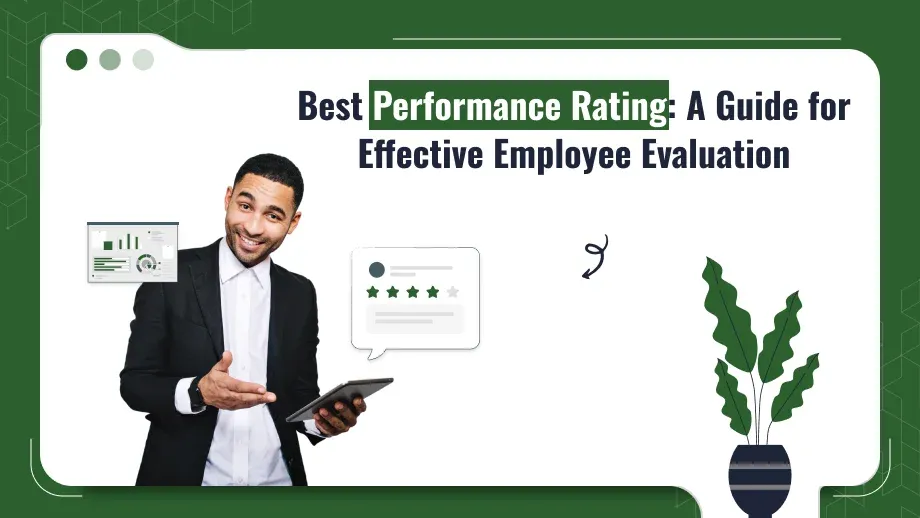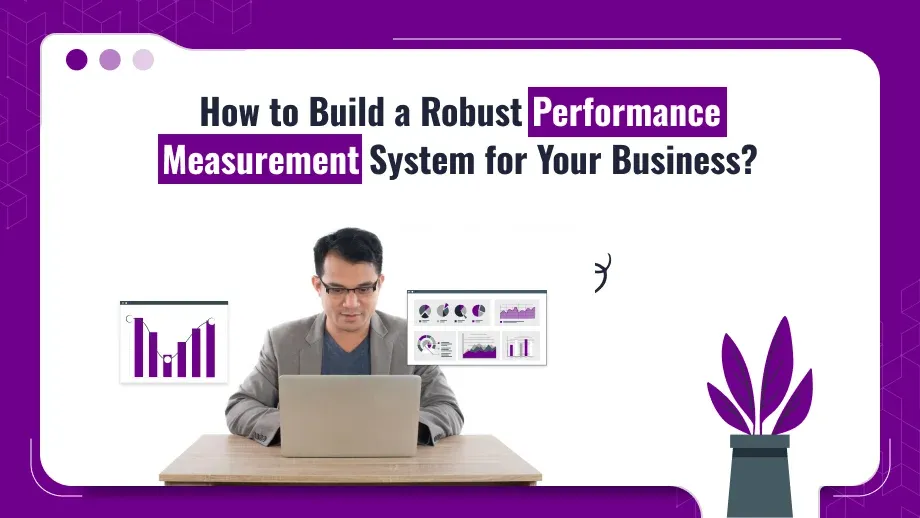
The rating performance forms part of an assessment regarding the performance of employees and represents the real need in the entire Performance Management Process. These ratings enable the organizations to be accountable, provide areas of growth, and assist professionals to seek careers with a structured approach towards assessing performance rating definitions. We will explain the definitions of the performance rating in this guide, distinguish different types of ratings, outline how they fit into the Performance Management System in HRM, and present best practices for effective implementation.
What Are Performance Ratings?
Performance rating is a formal assessment system that evaluates the performance of an employee for a given period of time. Such ratings examine critical elements such as job knowledge, skills, productivity, goal attainment, and behavioral competencies. The most critical role of performance rating is giving feedback, defining targets, and making promotion, pay and reward, and growth or development opportunities decisions.
Why Do We Need Performance Ratings?
Objective Measurement
Performance ratings ensure that different employees are judged with a standard rating scale, therefore making judgments objective, fair, and meeting corporate performance expectations. This thus eliminates bias, creating a just and unbiased system where individuals can rely on each other through teamwork.
Career Development Support
Managers can determine strengths and the areas in which employees need improvement after reviewing employee performance ratings. This review is to be followed by a personally designed career development plan. Such knowledge allows organizations to come up with proper training programs where gaps in skills are covered, strengths are shouldered, and leveraged for higher positions.
Increased Accountability
Performance rating clearly set expectations and allow the employees to clearly understand how their jobs are measured. Since their performance is being measured, it means the employees are motivated and even strive to exceed expectations, creating a culture of accountability and continuous improvement.
Alignment in Goals
Rating facilitates goal alignment. It ensures that the goals of individual employees are well aligned with broader organizational objectives. Overall business gets linked with individual performance through performance ratings so that every employee will contribute to the success of the company.
Improved Feedback Loops
The best Performance Management Process employs the use of performance ratings to create continuous feedback loops between employees and managers. Once employees are given structured feedback on their performance, it becomes easier for them to improve their work behaviors and performance.
Unlock the full potential of your workforce!
Contact us today to learn how performance ratings can transform your team’s performance
Performance Rating Definitions and Types
One piece of knowledge associated with an effective evaluation process is to identify the different types of performance rating scales.
There exists a commonly used performance rating scale that employs numbers to rank employees, such as: 1 to 5 or 1 to 10. This style of rating facilitates a quantified and simply comparable assessment. Example:
- Below Expectation
- Needs Improvement
- Meets Expectation
- Exceeds Expectation
The numerical scales give an easy way of evaluating performance and could be easily compared from one employee to another or even different departments.
Descriptive Rating Scales
Descriptive ratings utilize qualitative instead of numerical ratings. Rating scales in this approach use “exceeds expectations,” “meets expectations,” or “needs improvement” to rate performance. Although less numerically accurate, descriptive ratings are more apparent in the illustration of employee behavior and performance.
With the use of the 360-degree approach on feedback, employee performance ratings are derived from various sources, including supervisors, peers, and sometimes even subordinates and customers. This makes it more comprehensive as it provides all dimensions of the organization to come up with one that will point out strengths and areas needing improvement which may not have been observed by any one of the evaluators.
Behaviorally Anchored Rating Scales (BARS)
The Behaviorally Anchored Rating Scale, or BARS for short, links numerical ratings to specific, observable behaviors. BARS anchors the rating score with actual job performance behaviors rather than leaving it to the biased judgment of the evaluator. For example, the rating score of 1 can be “meets deadlines very seldom,” while the rating score of 5 means “consistently exceeds deadlines in excellent quality.” Such is the reduction of ambiguity in performance evaluation when using BARS and ensures a fair assessment.
The Role of Performance Ratings in the Performance Management System in HRM
Performance ratings, which form the part of the Performance Management System in HRM (Human Resource Management), ensure that assessment is aligned with the organization’s even wider goals. A performance management system consists of managing and improving performance at both individual and organizational levels through a clearly defined process for goal setting, monitoring, and outcome evaluation.
Sustains Main Elements of the Performance Management System in HRM Include Performance Ratings in Their System
Goal Setting and Planning
At the beginning of the performance cycle, the managers engage themselves with their respective employees to develop well-articulated measurable goals tailored to fit into the expectations of the company. Hence, when these goals are set with the performance ratings, progress toward the said goals can be measured at the end of the cycle.
Continuous monitoring of their performance keeps the employees on target. Well-timed feedback indicates areas that need attention and correction; performance ratings act as checkpoints where progress toward the specified goals is noted.
Within a performance appraisals, the manager gives attention to the employee performance ratings who have achieved, acquired skills, and put in specific behaviors in the specified period. Ratings determine the career development plans, promotions, and salary increase.
In relation to performance ratings, it is one of the methods that can identify areas on how employees can be improved. From performance ratings, a manager may suggest particular training or mentoring activities or even projects that can be able to develop the skills of employees.
Performance ratings are applied terms of rewarding and recognition. The employee who performs well is to be given bonuses, promotions, or other forms of recognition because such can motivate them to continue or even improve their performances.
Best Practices of Performance Ratings
Clearly Defined Performance Criteria
Performance criteria ought to be well defined and aligned to the organizational goals. Employees ought to know what is expected from them and how their performance is going to be rated. Such criteria should be known clearly and, above all, transparent for no room for ambiguity.
Regular Feedback and Check-ins
Performance Management should not be confined to annual reviews. Regular meetings and periodic feedback can help employees stay on track for the year. With frequent feedback, employees know whether they are meeting set performance expectations before the start of a formal rating process.
Training is important in helping managers to evaluate fairly and uniformly. Organizations can determine realistic and meaningful performance by training evaluators to use bias reduction techniques and effective feedback methods.
Use Multiple Evaluation Methods
A variety of methods, such as self-assessment, 360-degree feedback, and behaviorally anchored rating scales, provides a more comprehensive view of employee performance. Integration of the methods with numerical and descriptive ratings provides a more comprehensive evaluation.
Calibration sessions allow managers and HR to cross-check and align performance. This, therefore means that scores can be uniform between teams or departments. This does not eliminate the occurrence of “rating inflation” or low ratings but guarantees that scores coincide with the set standards of the firm.
Problems in Applying Performance Ratings
Although performance bestow benefits on a system, there are also drawbacks that define the system:
Lack of Objectivity
Managers’ personal biases can cause variations while rating the employees. Appropriate training along with standardized performance criteria can control these biases.
Rating Inflation
In this scenario, the manager is more than likely to rate the employee in a way that avoids disagreement or keeps the employee happy, but this might blur the actual picture of performance. Calibration sessions may reduce the possibility of inflated ratings.
Resistance to Feedback
They feel rated unfairly, or so they believe. This can be managed if organizations make an environment open in which ratings are viewed as a development opportunity, not as criticism.
Overreliance on Ratings
Criticism related to ratings might inadvertently foster the wrong competitive environment that discourages teaming. Organizations must ensure that ratings only form part of the total Performance Management Process.
Future of Ratings in Performance Management
Performance ratings should still be included in Performance Management systems even if organizational structures change. The approach towards ratings might evolve further in the future towards more continuous feedback models, but modern performance management systems are indeed integrating technology to provide real-time feedback, automate tracking of data, and more dynamic evaluation models such as gamified performance reviews and AI-driven assessments.
A valid, flexible, just, and fair performance ratings system will help create a high-performance culture in organizations and support ongoing employee development, which sustains competitive advantage.
Conclusion
The performance rating scales-numerical ratings, behaviorally anchored rating scales, and 360-degree feedback-are basic tools in the Performance Management System in HRM can design to standardize employee evaluations within the organization. With the performance rating scales, the firms can provide fair meaningful feedback that fosters performance improvement and development.
With clear goals, regular feedback, and a well-calibrated rating process, an organization makes employees’ performance align more closely with business objectives. Subjective problems such as bias and rating inflation are eradicated with best practices that make ratings a practical component of the performance management process.







